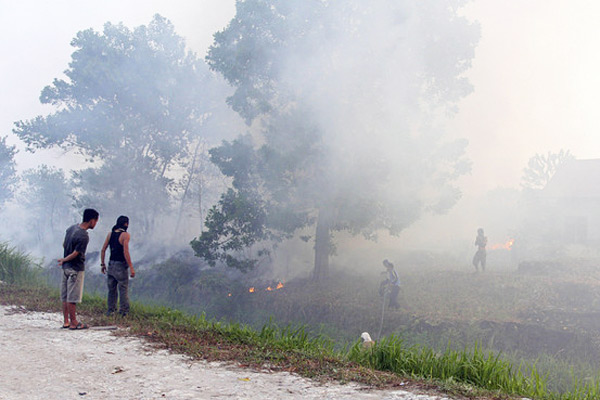 Research has shown a significant association between haze events in South-East Asia and mortality rates caused by respiratory illness on the west coast of peninsular Malaysia.
Research has shown a significant association between haze events in South-East Asia and mortality rates caused by respiratory illness on the west coast of peninsular Malaysia.
Since 1997, the massive burning of biomass in Sumatra and Kalimantan, Indonesia, has affected neighbouring countries such as Malaysia, Singapore, Brunei and Southern Thailand. The burning of biomass has generated a significant amount of haze that travels overseas, affecting the region’s economy and public health.
Haze resulting from forest fires is known to increase the concentration of toxic airborne particles that are smaller than ten microns in size, such as carbon monoxide, sulphur dioxide, nitrogen dioxide and ozone. Previous studies have found that airborne particles can cause serious respiratory effects. In 1997, South-East Asian haze increased the number of asthma attacks by 10.7% in Malaysia alone.
Professor Mazrura Sahani, an environmental epidemiology expert at Universiti Kebangsaan Malaysia, recently conducted a follow-up study on this issue focusing on Klang Valley, the most populated and most affected area on the west coast of peninsular Malaysia. She analysed the association between mortality rates from respiratory illness in Klang Valley and 88 days of recorded haze events from 2000 to 2007. Haze events typically last for seven days.
Professor Sahani collected respiratory mortality data from Malaysia’s Department of Statistics and obtained environmental data from six continuous air quality monitoring stations in Klang Valley. Her results showed that South-East Asian haze has increased the risk of respiratory mortality in Klang Valley as a result of increased exposure to toxic particles during the haze days. By the sixth day of a haze event, daily mortality rates were higher than normal.
According to Professor Sahani, this finding indicates the need for local public health authorities to provide appropriate health advice during haze episodes. The most vulnerable or sensitive groups to air pollution are children, adult females, the elderly, and those with underlying respiratory and cardiovascular diseases. She also stresses the need for international cooperation to reduce biomass burning given the serious public health problems this causes.
In 2015, Professor Sahani plans to study other health risks associated with air pollution and haze on the affected community. In addition, she will focus on determining the toxicity of the constituents of haze pollution in Malaysia. The study done by ResearchSEA.